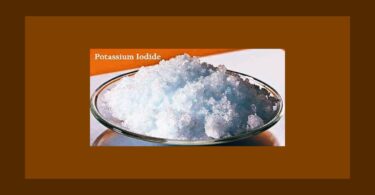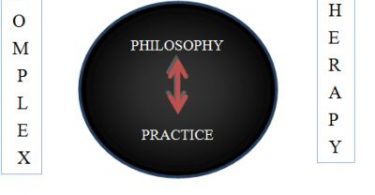Introduction
Ayurveda and Homoeopathy are two of the most widely used medical therapies in the world. They are based on the constitutional approach and therapeutics. There is strong similarity in them and her we compare and contrast their attributes.

- Nature and Ayurveda
According to the ancient texts of Hinduism, everything in the world is composed of five bhootas (elements) viz. Prithvi (earth), Apa (water), Teja (fire), Vayu (air) and Akasha (ether).
This concept called as ‘Panchbhuta Doctrine’ is strictly adhered to by Ayurveda.
Homoeopathic approach: The concept ‘what is present in nature is also present in the human’ is also preponderant in homoeopathy. Macrocosm and microcosm – Universe and Man – is the concept of holism in homoeopathy. The relation between Nature and Remedy is established through the doctrine of signature and symbolic presentation. Study of Materia medica is an evolved subject from the basic elements of proving, collection of symptoms, understanding the essence of remedies from the standpoint of nature, ingredients of elements linking chemistry and physiology of nature etc.
Examples: Silicea is more earthy, Nat-mur is full of the water element, Sulphur is fiery, Phosphorus is airy and Cann-ind has a strong ether element.
- Constitutional thinking
Constitutional peculiarities of a person are attributed to the preponderances or otherwise different doshas acting during the time of conception. Some people who have an equilibrium or harmony of doshas – Vayu, Pitta, and Kapha, during the time of conception maintain good health. While some, showing predominance of any one dosha at the time of conception, are liable to get diseases.
Homoeopathic approach: Constitutional prescribing is central to Homoeopathy, as also to Ayurveda. Both take into account the constitutional peculiarities of a person. The concept of miasm is the synthetic understanding of constitution in its totality. It all depends on the transmission of miasmatic forces and preponderance of a single or solo miasm or a complex miasm. The onward march of a disease is due to the dominant miasm.
- The concept of Disease
The malas (vayu, pitta and kapha), when they are in proper proportion in the body, act constructively, as do the dhatus. But when they are abnormal in proportion, then they are called dosha or vitiators of dhatus.
Homoeopathic approach: The concept of three doshas is akin to three miasms – Psora, Sycosis and Syphilis. Every one is born with all three miasms. But it is their abnormal activity, which leads to diseases. In the healthy state, there is equilibrium, peace within and without. Harmony is maintained in an integrated manner. Miasmatic activity remains latent. The arousal of miasmatic activity, due to endogenous and exogenous causes, deranges the vital economy, resulting in abnormal sensations, feelings and pathologies – the manifest presentation of the sickness.
- Causes of diseases
There are three things necessary for the onset of disease.
- nidanas or predisposing causes which vitiate dosha
- dosha themselves and
- dushyas or the deranged dhatus. Nidanas alone cannot cause disease by acting on the dushyas. Nidanas first act on the doshas and derange them. The deranged or vitiated doshas act upon the dushyas and cause illness.
Shaman (palliative) and Shodhan (detoxifying), or Nidan parivarjan i.e. removal of maintaining causes, have been followed in Ayurveda. Ayurveda explains health and disease in a very systematic, coherent and logical manner.
Homoeopathic approach: This is exactly what Homoeopathy emphasizes. There are three factors necessary for the production of the disease, 1. The host 2. The offending agent and 3. The susceptibility of the host.
It should be remembered that high immunity represents normal susceptibility while low immunity represents morbid susceptibility. It is the morbid susceptibility which predisposes a human being to attracting noxious stimuli. Unless there is predisposition, there can’t be disposition and disease.
- The concept of Diagnosis
Diagnosis in Ayurveda does not mean only naming the disease; it comprises much more. To begin with, diagnosis constitutes the predisposing causes, premonitory indications (purvarupa), symptoms (rupa) and full extent of disease (samprapti). Then the diagnosis of dhatu-vaishamya is made. Hence history taking is very important.
Homoeopathic approach: A homoeopath has to make a comprehensive diagnosis, which includes disease diagnosis and person diagnosis. The Ayurvedic method of diagnosis is very similar to homoeopathic diagnosis. The predisposing/exciting causes, fundamental causes, sickness at functional and structural levels and all this being looked upon as a synthetic phenomenon – are the matters of serious concern in the study of a human being in homoeopathy. Hence detailed anamnesis of the patient is crucial for constitutional treatment.
- Stages of the disease
According to Ayurveda, the disease passes through six stages: Sanchya, prakopa, prasara, Sthan-sansarya, Vyakta-awastha (rupa), then Bhed (types). Each stage has its own signs and symptoms. Knowing the stage of disease is important from the therapeutic point of view, because the same medicine may not be useful or may even prove harmful, when administered at a wrong stage of disease. Furthermore, dosha rarely get excited or deranged singly and different doshas may be excited or deranged in different patients having the same disease. All this has to be properly recognized and assessed.
Diagnosis is made from the history of disease in a patient, its onset, progression and the symptoms produced. All these things along with the details about the digestion of a patient, examination of pulse and excretions from the body like stool and urine, tell an ayurvedic physician which dosha is deranged.
Homoeopathic approach: The consideration of evolution of a disease process is of paramount importance in homoeopathy. It is studied in depth with dimensions of time and space. The concept of the living MM is not possible without the evolution in transitional phases. The evolutionary totality as gleaned from the patient’s history guides a physician in planning and programming – the miasmatic dominance, potency selection and repetition schedule, apart from clinical diagnosis.
The concept of a disease as a phenomenon that evolves from functional to structural, from asymptomatic phase to symptomatic, from subtle to gross, from common to uncommon, from subclinical to clinical, from structural to post-structural is one of the wise contributions from homoeopathy to the medical profession.
Being a constitutional therapeutics, homoeopathy sees the stages of the disease through the concept of miasms. It is the miasmatic activity that plays a vital role in the development of a specific stage of the deviant energy. The concept of situational materia medica is related to the ‘now’ stage, the system has manifested onto the surface.
- The role of diet, drugs and life style
In the treatment of diseases, an ayurvedic physician tries to correct the diagnosed imbalance of the dosha etc. through appropriate diet, drugs and change in wrong type of life style.
Homoeopathic approach: In the holistic therapy of homoeopathy, diet assumes a special position, apart from homoeopathic drugs given for the restoration of health. Change in wrong life style is of paramount importance in homoeopathy, nay, in every therapy.
- Sources of remedies
Ayurvedic medicines are mostly derived from vegetable sources though mineral compounds and sometimes drugs of animal origin are also used. There are a number of ways in which these drugs are dispensed, viz. powders, solutions, fermented liquids, pills, medicated oils etc.
Homoeopathic approach: Homoeopathy too uses the plant kingdom more; also mineral and animal sources, imponderabilia etc. The drugs are dispensed in powder form, solutions, pills etc.
- Administration of dosage
Ayurveda uses both crude and small, attenuated doses in treatment.
Ayurveda holds that the efficacy of medicine varies according to the time of intake, and the time of administration of medicine is decided on the basis of the disease condition. It is held that the efficacy of the medicine taken in the morning on an empty stomach will be more effective. Eleven patterns or timings of dosing of medicine are mentioned in Ayurveda viz. Abhaktham, Prakbhaktham, Madhyabhaktham, Adhobhaktham, Sabhaktham, Antharabhaktham, Samudgam, Muhurmuhu Sagrasam, Grasantharam, and Nisi.
Homoeopathy chiefly uses attenuated and potentized medicines. However, remedies are also administered in decimal and centesimal scale below Avagadro’s number.
There are no fixed timings for the administration of homoeopathic remedies. Based on clinical experience, some physicians advise following certain methods, e.g. Sulphur in the morning and Nux-vom at bedtime.
More comments:
- Ayurveda not only implements the law of similars, but the law of dis-similars is also applied.
- Ayurveda uses, mostly, drugs in crude or material doses. There is mention also of the efficacy of attenuated doses in Ayurveda. Chances of poisoning effects with Ayurvedic drugs are always there if the medicines are not prepared in appropriate manner (as described in ayurvedic literature) and prolonged medication continued in crude form, esp. heavy metals etc.
- Dietetic restrictions are much more and it is difficult to follow them in life as the tempo of life has accelerated and the human beings have gone very far from nature.
- Although Ayurveda follows individualization for the sake of treatment, very few Ayurvedic physicians follow this rule. Companies produce the drugs with various permutations and combinations and these are being sold through network, advertisements etc. All this becomes a capital market strategy where the human face is brushed aside. Beware, this is also happening in homoeopathy.
Conclusion
An attempt has been made to integrate the concepts in Ayurveda vis a vis Homoeopathy at a basic and applied level. There are many overlapping issues between them and to understand the integration of the therapies, it is necessary to study them in depth.






A fantastic comparison between homeopathy and Ayurveda. Thanks DR. Kulkarni.
There is a interesting book written by Dr A K Bhattacharya of Calcutta, namely ” Tridosha and Homeopathy”. Here he explains details of doshas (Ayurvedic) and homeopathic combinations.